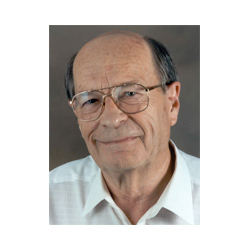
Fletcher: What about frequencies below 20 Hz (theoretically, the low-end of the human range of hearing)… how do they affect the tone?
Rupert Neve: OK Fletch, now we get down to the meat and potatoes… I believe it is necessary to not only maintain the frequency response, to well below 20 Hz, but to keep the phase integrity. Failure to do this produces a slight muddiness and again, it is very difficult to quantify.
All of my designs are kept within a phase shift of between 2 and 5 degrees down to 10 Hz
Bink: What are the most important measurement specifications, in your opinion? What specs can be thought of as less important than the resultant ‘sound’?
Rupert Neve: This is almost impossible to answer… because it depends on the function of a particular circuit. I suppose the most significant measurement is to establish that there is virtually no crossover distortion.
We currently in the Pure Path design for harmonics measured on an Audio Precision System 2 less than 130 dB down. This also applies an extremely low noise floor I’m sorry, I meant implies…. and for example, the 9098 console was measured at unity gain has a dynamic range of about 126 dB.
This of course is 6 dB better than any digital system can yet deliver. These two measurements are probably the most significant. Of course, when digital comes of age, we have circuits on the bench now which will deliver better than 140 dB of dynamic range!
Ronny: Speaking of keeping phase shift between 2 and 5 degrees. Do you have any views on linear phase EQ?
Rupert Neve: Ronny, this is a perpetual question we get asked all the time. I take it you would be referring to equalizer and filters.
When you apply equalization to an audio signal you are enhancing or depleting a portion of the spectrum. And, phase shift will always accompany that correction of equalization in the analog domain This is part of nature.
You can experience it by simply cupping your hands around your mouth and your voice will immediately change frequency response due to the resonator you have now applied.
If you did something similar with a musical instrument the same would hold true. The acoustic resonator which you are applying is following laws of nature that include a lot of phase shift.
It sounds sweet and natural of course, some people’s voices benefit more than others!!
loudist: Please excuse me if this was already asked but… regarding phase shift, isn’t this one of the reasons tubes (valves) sound better to most is that the phase shift of tubes is minimal compared to solid state amplification?
Rupert Neve: This is not something I would agree with… Tubes sound better because, for the most part, they are used in single sided configurations or if they are used in push-pull the crossover point is already biased well away from zero.
Solid state amplifiers are much easier to design with extremely low phase shift. Not specifically due to tubes vs. solid state but because the impedances necessary to use in tube circuits make them somewhat more limited.
